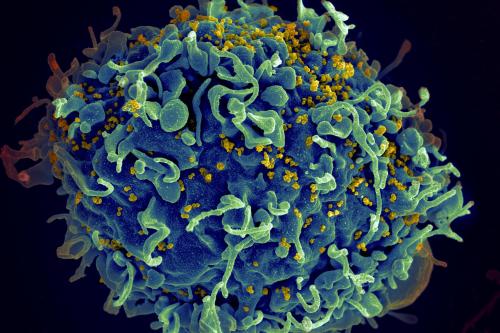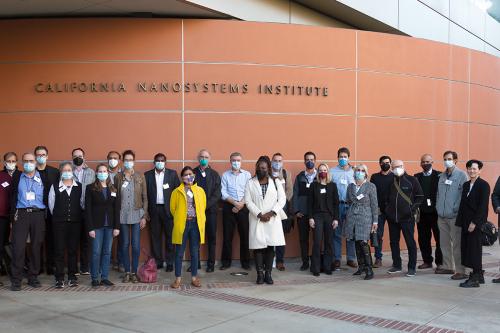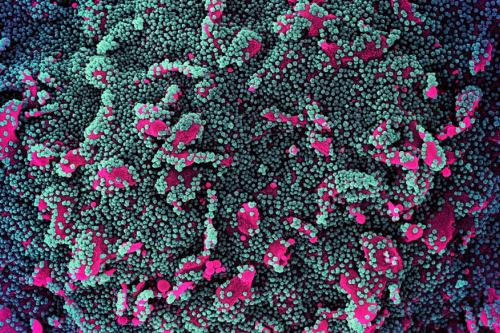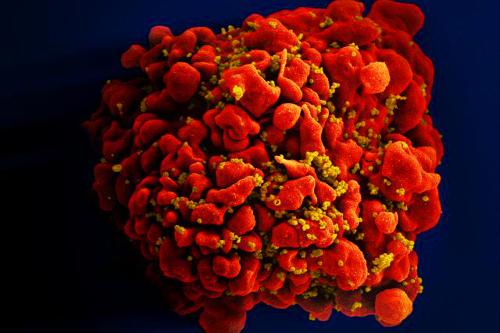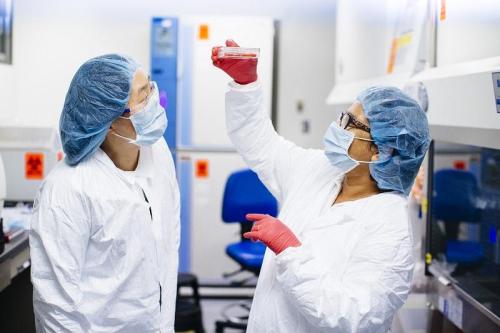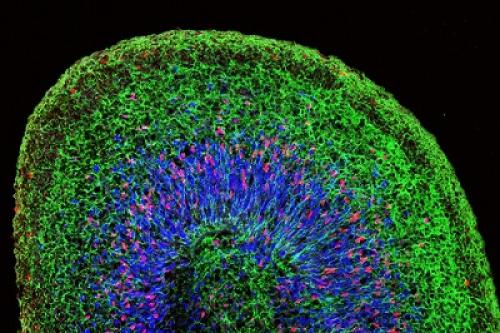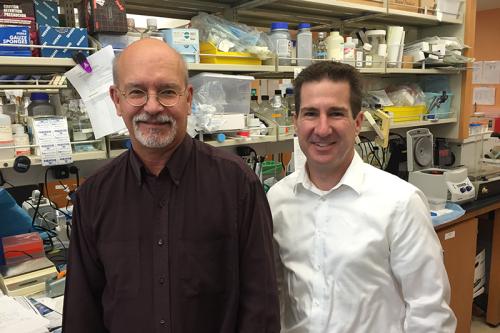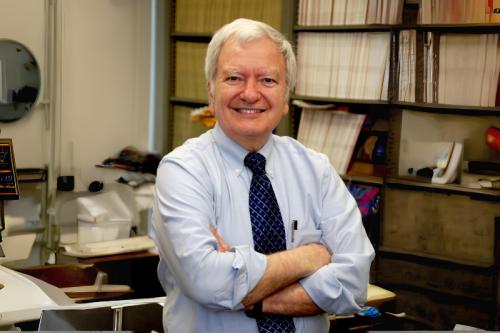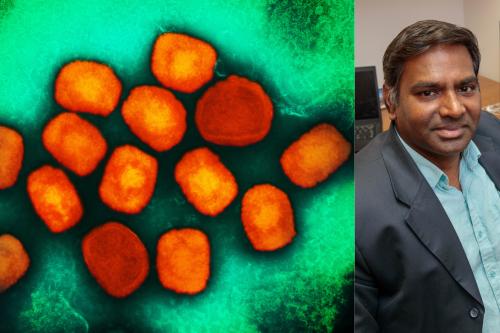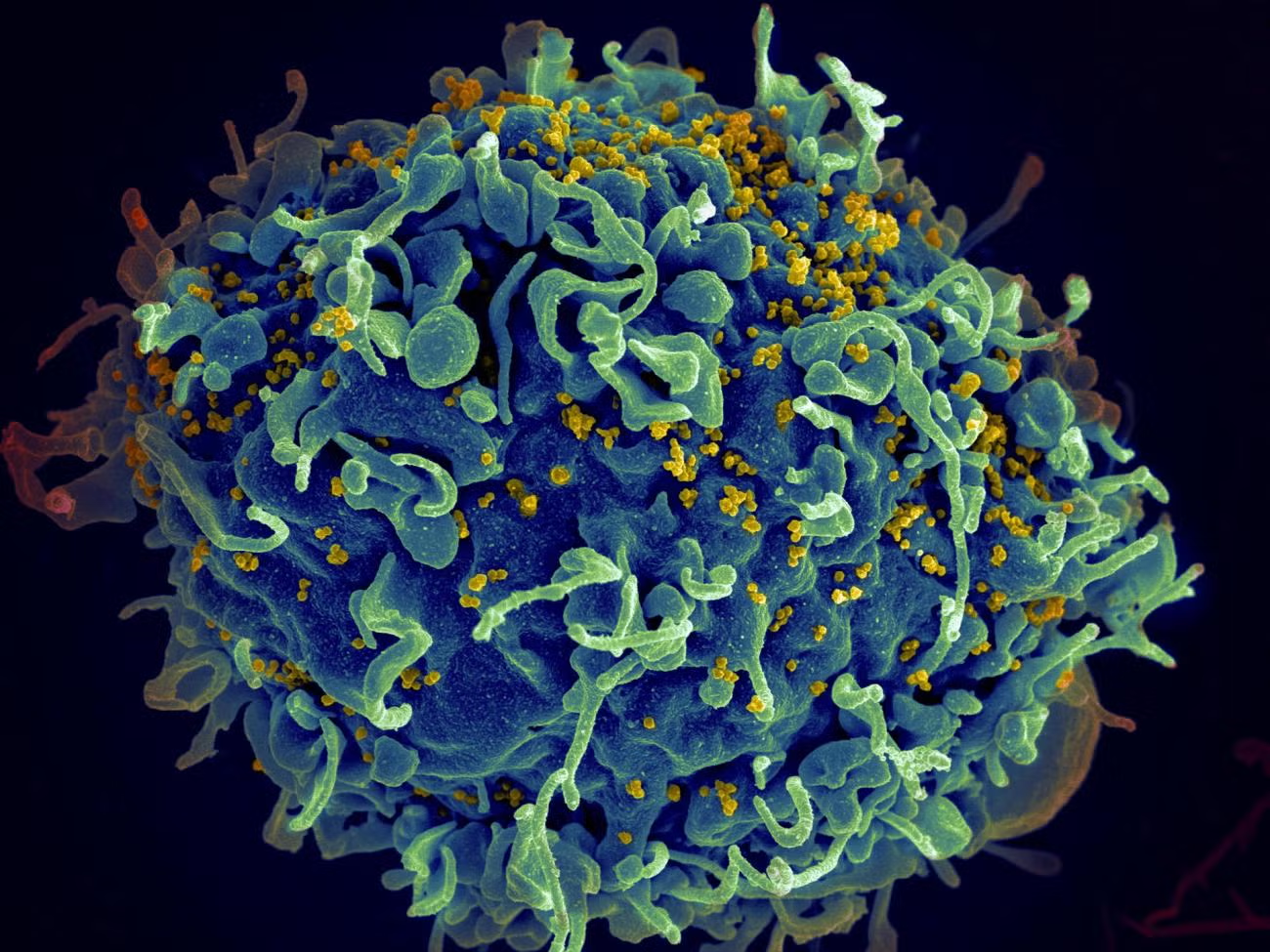
Infectious Diseases
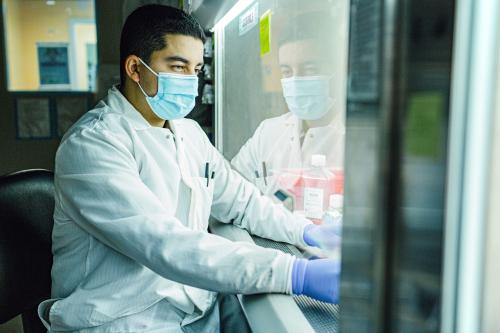

Overview
Infectious diseases are estimated to cause a quarter of all deaths globally, with vulnerable populations often facing the most severe impacts. To change this reality, our scientists are building on basic science discoveries and devising novel approaches to prevent the spread of infectious diseases and develop new treatments for these often life-threatening conditions.
Center researchers are studying the cellular mechanisms, including the metabolism, evolution and transmission, of disease-spreading pathogens such as bacteria, viruses and parasites. From exploring signaling pathways that occur during COVID-19 and Zika infections to discovering novel mechanisms to cure HIV, our researchers are taking an interdisciplinary approach to alleviate the burden of these diseases.
Their studies leverage stem cells Cells that have the ability to differentiate into multiple types of cells and make an unlimited number of copies of themselves. stem cells Cells that have the ability to differentiate into multiple types of cells and make an unlimited number of copies of themselves. to gain critical insights into how the immune system responds to pathogens and the strategies these disease-causing agents employ to evade the body’s defenses. Our scientists are applying cutting-edge technologies to translate knowledge gained from these studies to drive us toward the next generation of vaccines, diagnostics and treatments.
Our Goals
- Develop treatments for HIV and other chronic viral infections that engineer a patient’s own blood stem cells A type of tissue-specific stem cells found in the blood and bone marrow that can form various types of mature blood and immune cells. These cells play a crucial role in maintaining the body's blood supply and immune system by continuously producing new blood cells throughout a person's life. blood stem cells A type of tissue-specific stem cells found in the blood and bone marrow that can form various types of mature blood and immune cells. These cells play a crucial role in maintaining the body's blood supply and immune system by continuously producing new blood cells throughout a person's life. to produce T cells White blood cells that naturally fight against disease-causing invaders using specialized molecules, called receptors, on their cell surface. The receptors help T cells seek out and destroy virus-infected cells or cancer cells. T cells White blood cells that naturally fight against disease-causing invaders using specialized molecules, called receptors, on their cell surface. The receptors help T cells seek out and destroy virus-infected cells or cancer cells. that can locate and kill infected cells to prevent reinfection throughout the patient’s lifetime
- Leverage 3D porous injectable biomaterials to engineer vaccines that create longer-lasting immunity against pathogens including the influenza virus
- Investigate how certain viruses enter the central nervous system and attack the brain to inform the development of preventative therapies that protect against these neuroinvasive infections
- Develop a “kick and kill” therapy for HIV that works by sending an agent to bring the dormant virus out of hiding and then enhancing the immune system’s ability to kill infected cells and clear the infection
- Explore how intracellular signaling pathways contribute to the development of COVID-19 or congenital Zika and the role these pathways play in tissue repair after infection
- Develop antiviral therapies for high-consequence, hemorrhagic fever-causing viruses such as Hanta, Arena, Nairo and Bunya
- Engineer rapid and scalable genomic diagnostic technologies to detect novel pathogens and prevent future pandemics
- Study parasite epigenetics The field of study focused on the dynamic network of chemical compounds surrounding DNA that can influence gene expression without altering the underlying DNA sequence. With modern DNA sequencing technology, scientists can measure epigenetic marks across an entire genome. epigenetics The field of study focused on the dynamic network of chemical compounds surrounding DNA that can influence gene expression without altering the underlying DNA sequence. With modern DNA sequencing technology, scientists can measure epigenetic marks across an entire genome. to develop novel therapeutics for infectious diseases
Research Highlights
Stem cell transplants lead to HIV remission
A woman living with HIV-1 is in remission after she receives specialized stem cell transplants to treat acute myeloid leukemia. Insights gained could inform new therapies for HIV.
Preventing future pandemics
Center scientists join an interdisciplinary group applying artificial intelligence as well as novel drug screening and optimization technologies to prevent and prepare for the next pandemic.
A longer-lasting COVID vaccine
UCLA researchers identify rare T cells that can be leveraged toward the development of COVID-19 vaccines with longer-lasting immunity and greater protection against new variants.
Advancing HIV gene therapies
Center researchers devise a CAR-T gene therapy for HIV that engineers a patient’s own blood stem cells to produce T cells that can locate and kill HIV-infected cells throughout their life.
Taking on COVID-19
Our scientists channel their stem cell expertise to seek new and creative ways to reduce the spread of the virus through new vaccines, diagnostics and treatments.
Leveraging 'mini brain' organoids
Our researchers have transformed stem cells into human brain tissue “organoids” to better understand how Zika infects and damages fetal brain tissue and identify drugs to prevent these harmful effects.
Gene therapy for chronic HIV infection
Center researchers have modified blood stem cells with an engineered molecule called a chimeric antigen receptor, or CAR, to create functional T cells that can kill HIV-infected cells in mice.
Progress toward a Zika vaccine
Center researchers work to move a promising Zika vaccine from animal models to human clinical trials. If successful, this vaccine technology could be adapted to protect against other pandemic-potential viruses.
